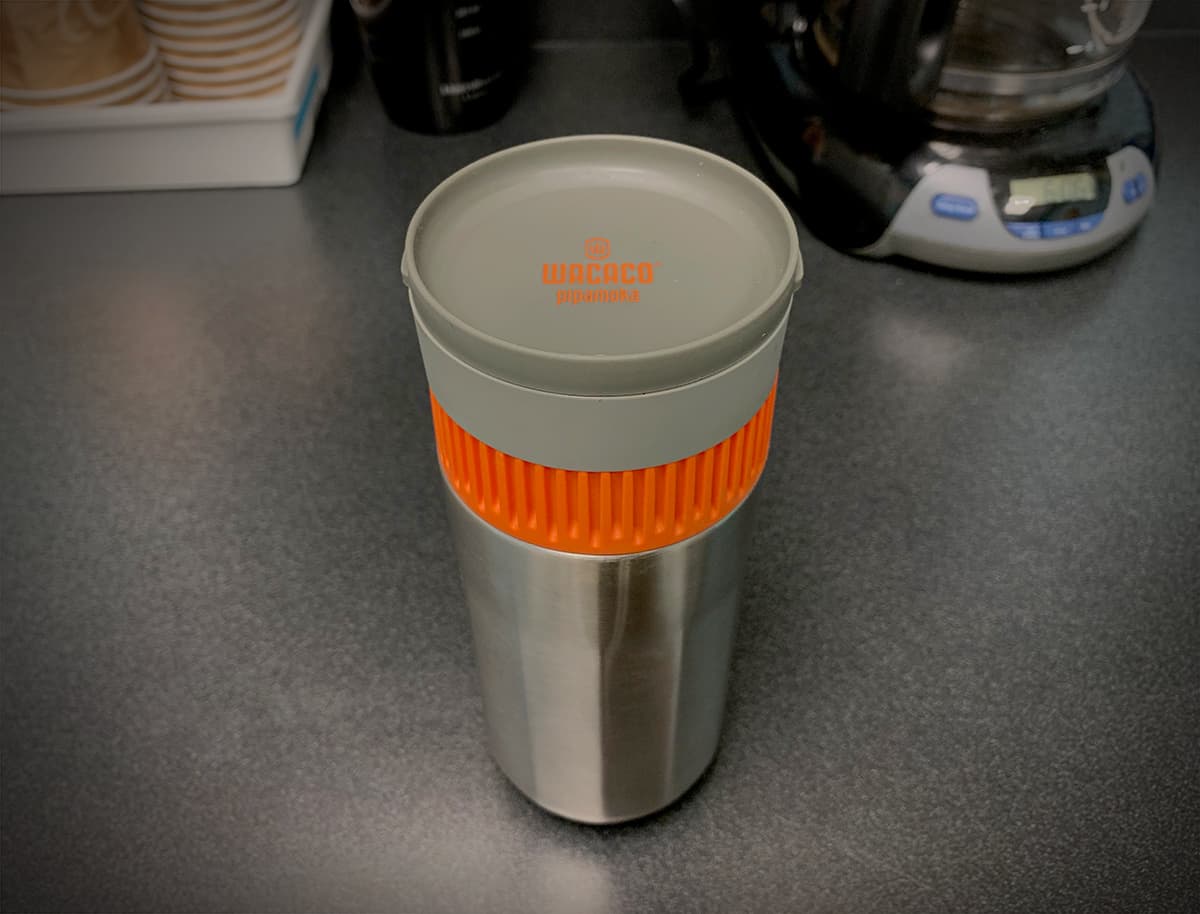
REVIEW – I love coffee, more so than my office mates, and am usually looking for ways to brew single cups of coffee without resorting to wasteful Keurig cups. So when I got the chance to review the unique Pipamoka Portable Coffee Maker from Wacaco, I was excited to give it a try!
What is it?
The Pipamoka, which maker Wacaco describes as an all-in-one “nomadic” portable coffee maker, is a combination coffee press and insulated mug capable of brewing a cup of coffee in minutes using a built-in, hand-turned press.
What’s in the box?
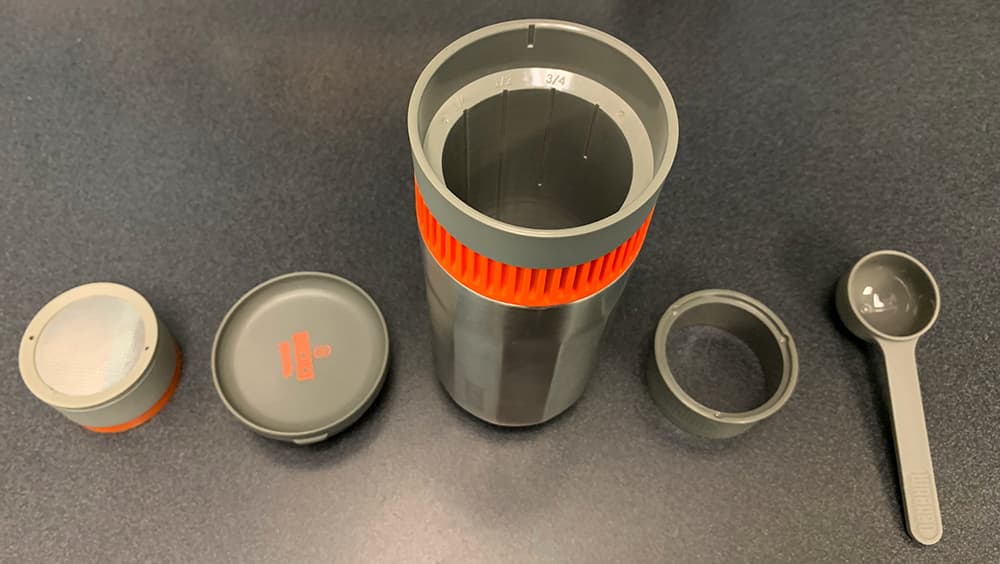
- Pipamoka with 10 fl oz (300mL) isothermal stainless steel mug
- funnel
- scoop
- brush
- multi-languages instruction book
- warranty card
- one sticker
- carrying bag
Hardware specs
Dimensions: 2.85” x 7.16” (73 mm x 182 mm) Weight: 0.94 lb (425 g) Mug capacity: 10 fl oz (300 mL) – brews up to 8 fl oz (240 mL) Ground capacity: 3.25 tsp (16 g)
The coffee to water brew ratio is similar to standard drip or infusion methods, close to 1:15 (1 g of coffee ground for 15 mL of water). Wacaco recommends using a medium to medium-fine grind for optimal brewing performance.
Design and features
I’m an avid coffee drinker and usually have between 2-3 cups a day, especially when I’m at the office. And since I’m not a big fan of the coffee we brew here, usually made from those giant tubs of Folgers Classic Roast, I’ve looked into other methods of making my own little cup of that good bean juice.
We do have a Keurig machine, but I just can’t get behind the extra waste (not to mention cost) involved in buying all those k-cups.
I have both an Aeropress, which is like a rubber and plastic manual espresso press, and a large insulated mug with a French press built into it. Both do a serviceable job, but require precise coffee measurement and careful watch over time. And to be honest, both of those make a big mess.
So when the fun-to-say Pipamoka came across my radar, I was eager to try it out.
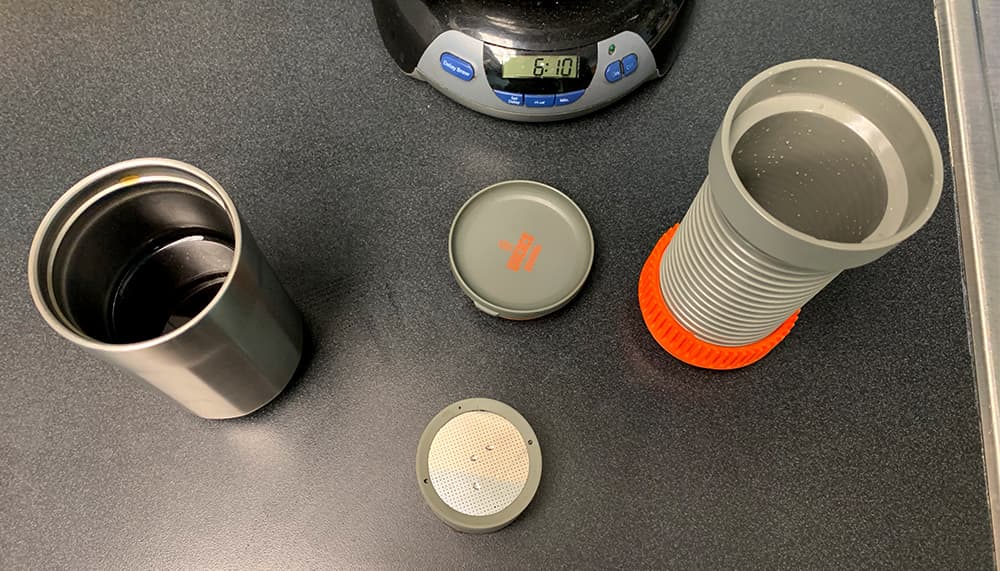
The Pipamoka coffee press, manufactured by Wacaco, is a manual, vacuum sealed coffee press integrated with a rugged, insulated stainless steel mug. At its core, it’s very close to the mechanics of a French press, forcing hot water through coffee grounds at a high pressure over a period of time.
It all makes sense when we walk through the coffee making process, which, once practiced, usually takes about 2-3 minutes.
Setup
All of the necessary parts of the Pipamoka smartly fit within the mug itself, making it extremely compact and neat for keeping on a shelf or packing away while camping.
Pull out the coffee pod, scoop, funnel and brush and make sure the inner press is all the way down inside the mug.
The first thing you’ll want to do is put the kettle on. Whether you’re out camping or at the office, get some water boiling. You’ll want to set it aside so you can get the water at around 190º, since that’s still plenty hot but not so hot as to burn the beans, which is a thing that can happen.
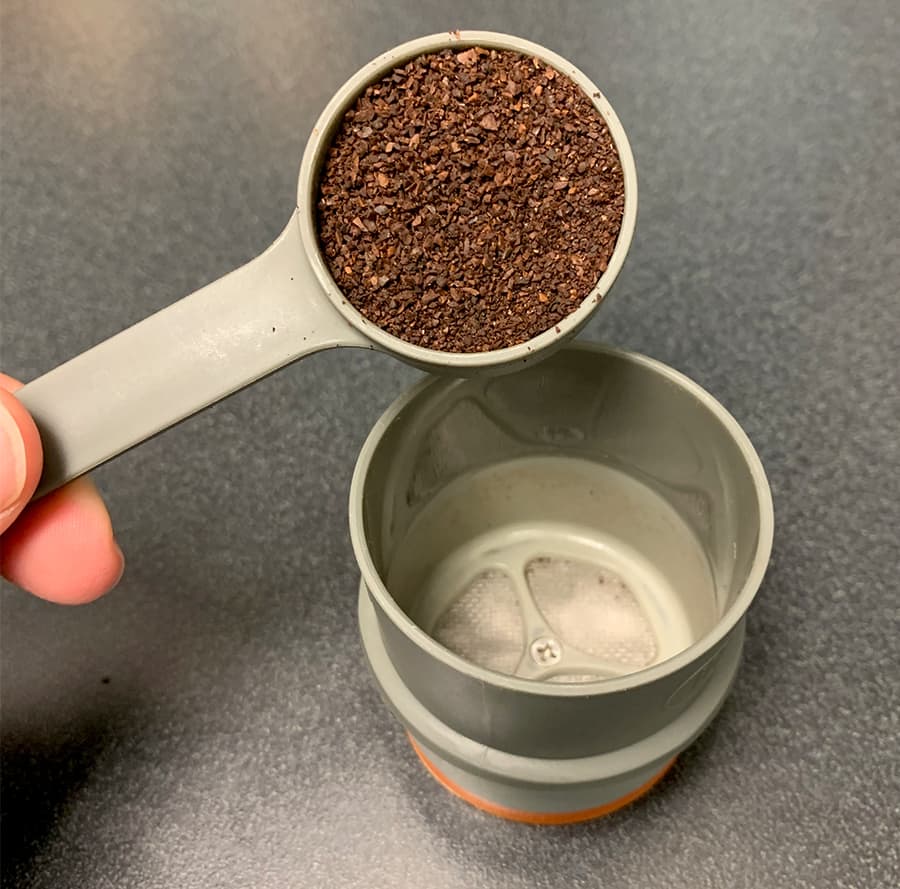
Next, get yourself a couple scoops of coffee using the included scoop. I’ve found that the coffee filter pod can accommodate just under 2 level scoops, depending on the fineness of the grind. Place the filter on top of the pod and fill it up just below the top, and tamp it down slightly.
Next, place the lid of the filter pod securely in place. The filter is reusable and cleanable, which is fantastic for the environment… most standard coffee pots, and even the Aeropress, use disposable paper filters.
Fill the mug with hot water up to the 1 Cup mark, at the most. That will brew you about 8 oz. of coffee. For me, personally, that’s a little too watered down. I’ve found that the 3/4 mark works best, even though it brews less actual coffee.
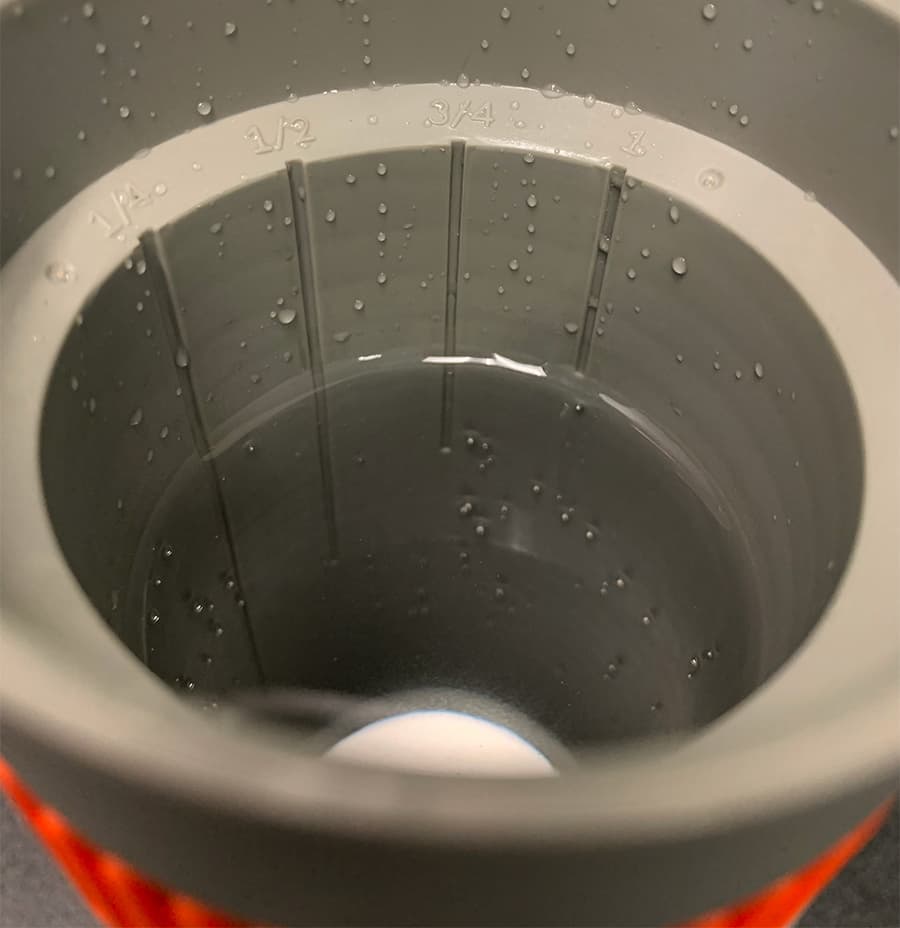
Next, you simply drop in the coffee pod and wait until it sinks to the bottom of the container. Place the top sealing lid securely in place and slowly start cranking the orange ring counter-clockwise.
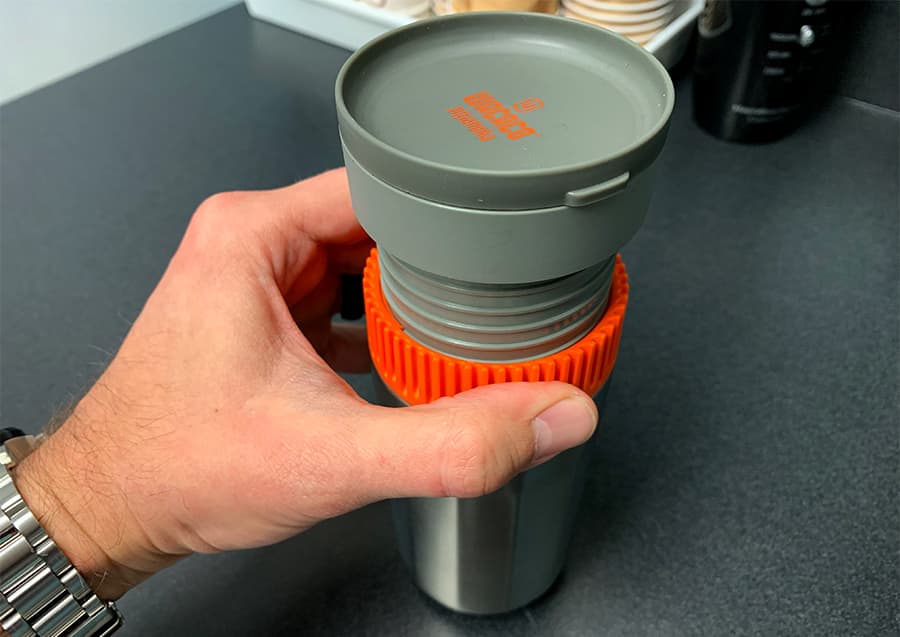
The water, using vacuum pressure, is forced through the coffee pod into the mug below. The gauge of the ring and threading makes it both easy to turn and allows you time the flow of the water through the ground coffee. The time that it takes you to fully extend the threaded reservoir should be the ideal amount of time the water is being forced through the grounds.
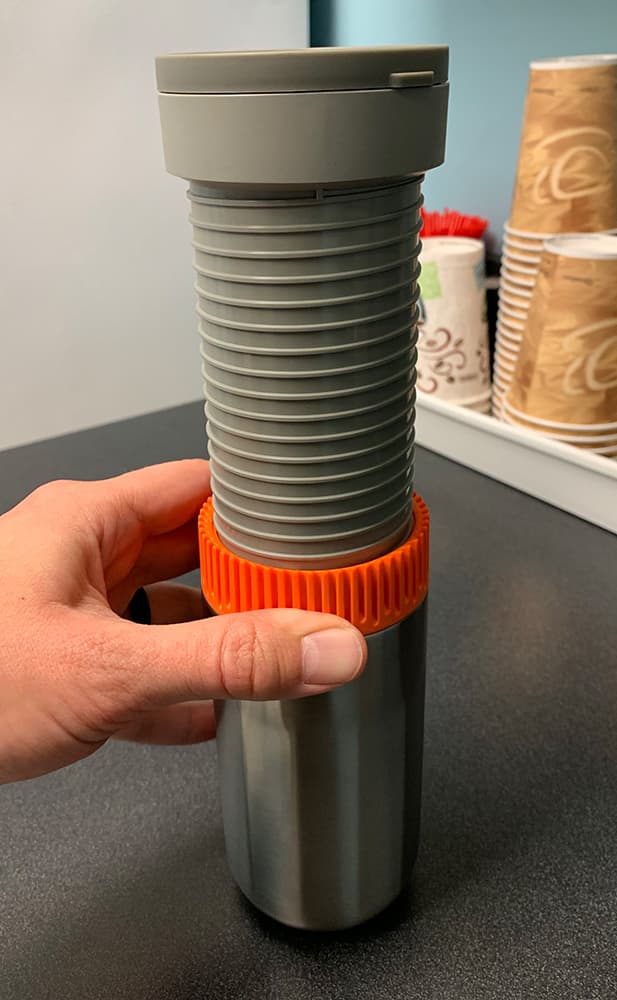
When you’ve rotated the ring as far as it will go, simply pull it out and set it to the side, and your coffee is ready.
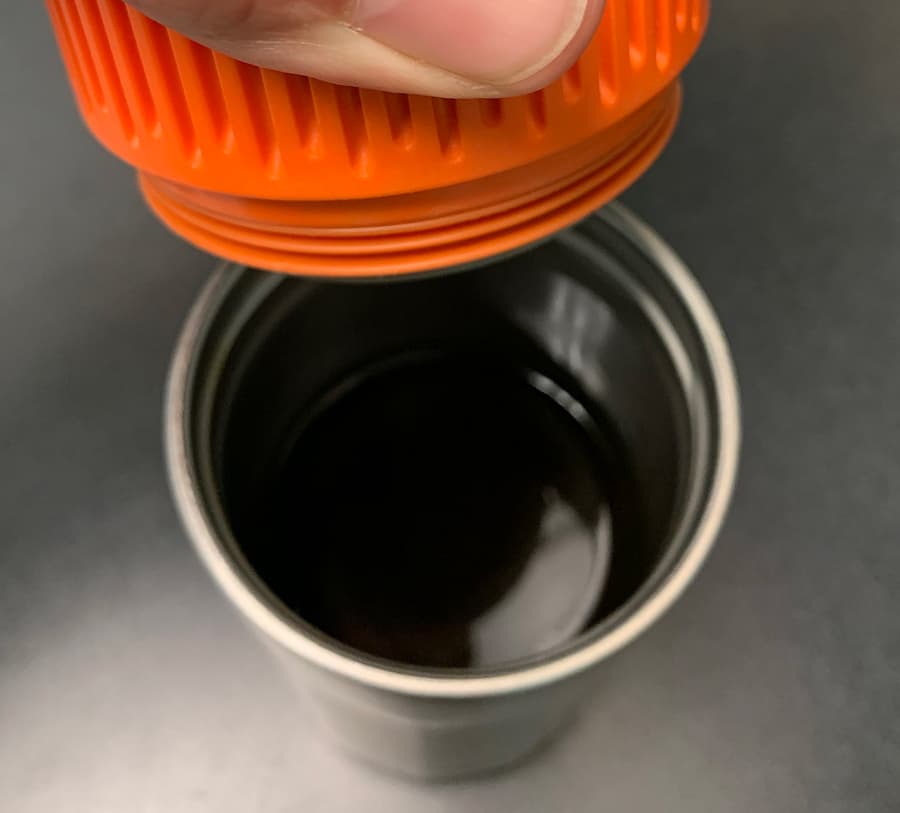
If it makes more sense to see all of these steps in action, Wacaco has an informative how-to video, which I’ll embed below.
Performance
So in practice, the entire brewing process (minus the time it takes to get some water to an appropriate temperature) only takes 2-3 minutes. Even so, there are some fine-tuning tricks to master.
If you like to grind your own coffee like me, then just how fine you grind it is something to take into consideration. If you aim for coarse drip grind, that should work well. During my testing, I left the grinder on a bit too long and it was really difficult to turn the press since the coffee was like a solid brick inside the pod.
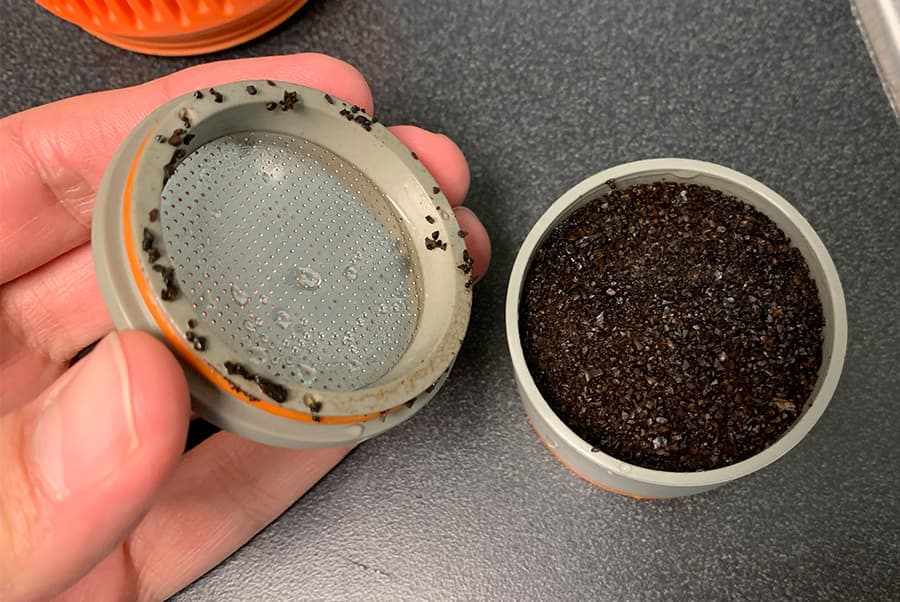
Another aspect of this manual press is that turning the press too quickly will force all the water through at a rapid pace and you’ll end up with a weaker brew. It takes a bit of practice to get the right timing down. It’s what led me to simply reduce the amount of hot water I was using from 8 oz. down to 6.
This is really the only knock I could think of against the Pipamoka. While the entire process is relatively quick, at the end you’re left with a measly 8 ounces of coffee at most. Even sipping, that’s barely enough coffee to warrant use of an insulated mug that can keep coffee hot for hours. I can’t imagine getting 3 sips in and thinking “Woah now, don’t want to overdo it” and putting the rest away for later.
And by the way, after doing a couple shake tests, I found the lid must be screwed on very tight to keep liquid from spilling out.
Even if you made the coffee with the explicit purpose of drinking it later, you’d still have to find a place to store the other bits while the cup was in use. I guess what I’m saying is that you’ll probably find the coffee stays hot enough. I just wish there was more of it.
What I like
- Rugged, insulated mug
- Environmentally friendly — no waste
- Compact design
What I’d change
- I wish it made more coffee than 6-8oz.
- Tricky to get the brewing time and ground right
Final thoughts
Overall, I like the concept of the Pipamoka slightly more than the product itself. It’s environmentally friendly, compact, rugged, simple and attractive, which checks all the boxes for a good camping/travel appliance. I just wish it were about 20-30% larger so it made more coffee and I could get some use out of that insulated mug. That would really take it to the next level.
Price: $46.90
Where to buy: Wacaco’s web store and Amazon
Source: The sample of this product was provided by Wacaco.



Gadgeteer Comment Policy - Please read before commenting
This seems an interesting device but the Aeropress is no more messy or preciseness-requiring than this. And at almost half the price. (Bed Bath and Beyond with 20% off coupon = $25.) With either you can increase the ground coffee amount and add hot water at the end for a larger cup.
You’re right, it’s much more customizable as to the amount of coffee, as well as the cup you can use with it. I’ve used one for years, and once you master using it, it’s pretty much the way to go. I wish there was a more permanent filter than the paper discs.
Paper filtering is actually better in a sense. It removes a compound that can raise cholesterol. Googling will point to the scientific article that noted that discovery.
Agree with above, the Aeropress is at least as forgiving (1 scoop grinds, 3/4+ full of water) , at least as fast, and LESS messy than this gadget. (and cheaper too) After pressing the concentrate on an Aeropress, unscrew the cap and push the plunger all the way thru to pop the grinds into the trash. A quick rinse of the bottom of yhe plunger, sit the cap on top, and it’s clean and ready to put away. Much easier than removing and rinsing out the coffee holder here. And the AP let’s you control strength by how much water is added to the pressed product. AND, the AP concentrate makes great, not-weak iced coffee.
Hm, interesting!
pro tip: add a bit of sweetened condensed milk to the iced coffee, before adding ice/water.
I’ve been using this new Metal APP filter from ameuus, it’s really neat and comes with a drying stand. A bit gimicky but it works pretty well.
Several companies make permanent stainless steel disc filters for the Aeropress. I prefer those over the paper filters as they allow more oils through to the final cup which I think it gives the coffee a fuller flavor with a little better mouthfeel.
How hard is it to clean out the grounds? That is the main reason I don’t use a French press.
You can knock most of the grounds out of the little metal coffee cup with a few sharp knocks against the trashcan lid, then a quick rinse in the sink. It’s pretty quick to clean out. It does come with a tiny brush, but I didn’t feel the need to use it.
I have yet to find a better travel press/cup than this. https://waterbobble.com/products/coffee-tea-maker/presse-by-bobble-coffee-tea-maker/
I have the 1st gen one that works great, going on 5 years.
I have the pipamoka, nanopresso and aeropress (as well as numerous other methods). Coffee from the Pipamoka seems a bit weak and the central core is quite a big thing to put somewhere while you drink the contents of the cup. For an espresso style hit I love the nanopresso but not the cleaning up afterwards. In my view, the Aeropress is still the best portable coffee maker and is nearly clean when finished. I have used a stainless filter in it but prefer the paper ones, I also use the inverted method.
I will, however, keep the Pikamoka in the car with a jetboil or hot water flask as it is perfect for an emergency coffee.